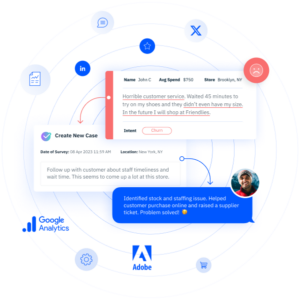5 Things Successful Customer Experience Leaders Know That Others Don’t
CX leaders know that knowledge is only a means to an end. They know that it is the “doing” that keeps the flame of knowledge from burning out. They work hard on these five skills, constantly practicing and refining them because they know the purpose inspiring those actions will make all the difference for their employees, customers, and bottom line.
In the last several years, there is no doubt that improving the customer experience (CX) has been a top priority for any company looking to improve employee performance, drive customer value, and grow their bottom line. Yet there remains a gap between those CX leaders who successfully lead their organization in effecting CX change and those who do not. What makes the difference?
CX leaders know how to do these five things successfully:
Align the Vision
CX leaders know that driving a common purpose starts with having consistent language and definitions across their organization. How else would everyone in an organization know what makes up an effective customer experience without first having a clear, agreed on definition?
CX leaders also constantly connect specific customer feedback to each customer touchpoint to bring life to this definition of an effective customer experience. Ultimately, these CX leaders line up the overarching brand promise, employee experience, and internal training across the various key CX touchpoints.
Intentionally Enable Connections
CX leaders know that aligning a vision does not happen on an island. They use their leadership skills of kindness, credibility, and telling a compelling story to build an army of passionate individuals within their organization who rally around making their customers’ lives better. They purposefully network within their organization to get buy-in from key stakeholders who have power, influence, passion, budget, direct access to customers, or other essential tangible or intangible resources across all departments.
Additionally, they take a good look at the various projects stakeholders are initiating to see if they would truly make customers’ lives better. CX leaders then humbly help these key stakeholders champion these projects to successful outcomes. They further enable internal connections by breaking up silos and supporting cross-functional teams. In the end, they know that intentionally investing in trust pays dividends in the end.
CX leaders also know the importance of connecting their employees with customers. At the top of the house, CX leaders know that sometimes a few executives become “hard of hearing” when it comes to listening to the voice of the customer. They encourage these and all executives to periodically work alongside customer-facing employees to keep their customer listening muscles from atrophying. In the field and with customer-facing employees, CX leaders, along with the training team, use various forms of customer feedback to give these employees vivid descriptions of what a great customer experience is (and what it is not).
Maintain Relentless Focus
CX leaders know their customer listening programs inside and out. This empowers them to know which key areas need to be improved within their organization. CX leaders maintain relentless focus on these key areas and are not distracted by the “side projects of the few” or on things that matter less. They know how to say “no” which frees them up to work on only those things that will truly drive improvement. Importantly, they know the “why” behind what they measure and don’t lose sight of it.
Drive Consistent Improvement
CX leaders know the organizational weaknesses at each customer touchpoint and support the person or team in charge of championing the projects that will improve their customers’ lives in these areas. They constantly push for executive ownership and stakeholder accountability. If internal incentives are used, CX leaders know that tying incentives to desired behaviors (not scores) brings about the greatest change.
CX leaders know they are playing the long game and patiently pursue the most effective path for sustainability within their organization. This may mean connecting with specific people within their organization, upgrading needed tools or resources, getting buy-in from a certain department, or discovering the real reason of what turned the last “program of promise” into a “program of the month” where enthusiasm for the program quickly waned.
Communicate, Communicate, Communicate
The old real estate adage is “location, location, location.” CX leaders know that “communication, communication, communication” is vital to the success of any customer experience improvement strategy. In the early stages of their CX journey, CX leaders employed various internal awareness campaigns. Later in their journey, they continue the conversation by discussing success stories, citing specific examples from customer feedback of employees who have demonstrated effective improvements to the customer experience. They publish these successes in internal newsletters, their intranet, in employee paychecks, and anywhere else they can keep the message top-of-mind. CX leaders also work with the marketing department to communicate with customers when they have improved a product or process.
Ultimately, CX leaders know that knowledge is only a means to an end. They know that it is the “doing” that keeps the flame of knowledge from burning out. They work hard on these five skills, constantly practicing and refining them because they know the purpose inspiring those actions will make all the difference for their employees, customers, and bottom line.
